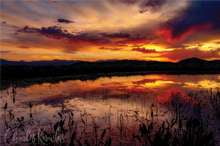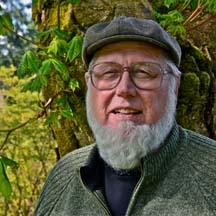No products in the cart.
A Prairie Homecoming

To Harvest the Camas
By Gary Oberbillig
Fairfield people have considerable respect in their voices when they say, “That’s one of the original families around here.” The pioneer families of Camas Prairie have more than 125 years of farming and ranching tenure on the land, yet others have been here far longer than that.
It’s a story familiar all around the West. I once attended a public hearing on a controversial land use project during which each person who rose to speak emphasized how early their own family had arrived in the area.“During the nineteen-twenties,” said one. “At the turn of the century,” said another. “Our family arrived when the state was still just a territory,” a third person claimed. Clearly, these folks felt that to underscore their family history would give further weight and dignity to their testimony. One of the last people to approach the microphone said, “Ladies and gentlemen, I’m a fisheries biologist who works for Native-American tribes around here, and I’m not even going to attempt to tell you how long they’ve been here.” With that, the tense room dissolved into laughter.
The word “camas” or “quamash” comes from the Nez Perce words qém’es, for the delicate blue-flowered lilies that once covered the wetter valley floors throughout the Intermountain West. The flowers, however beautiful, are merely the visible indicators of succulent bulbs that grow underground. For the Shoshone and Bannock people and other tribes in the region, camas was an eagerly anticipated summer treat after the deprivations of winter. The people let nature do the planting, but they tended it. As soon as the camas flowered, they would search the meadows carefully to pull out any plants with white flowers, because those plants are poisonous.
This content is available for purchase. Please select from available options.
Purchase Only
Purchase Only


Comments are closed.